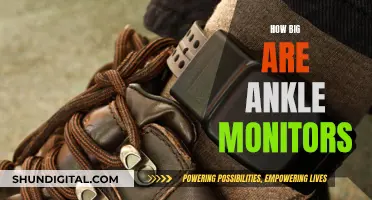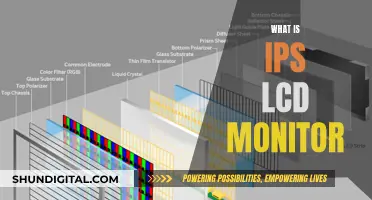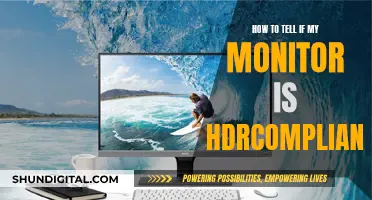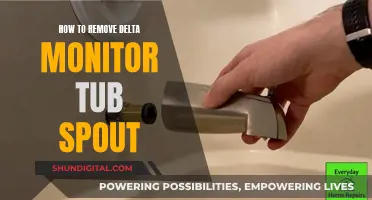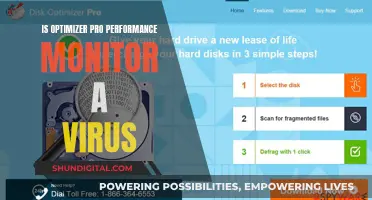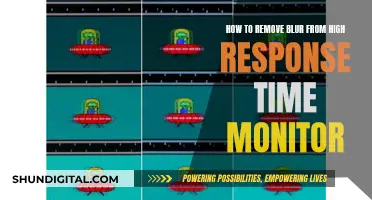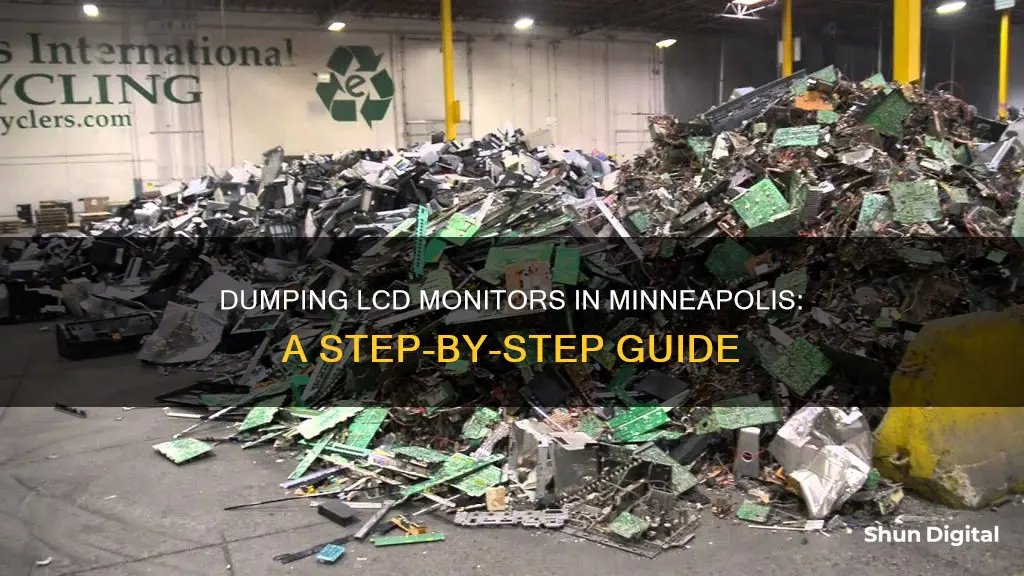
If you're looking to dispose of an LCD monitor in Minneapolis, it's important to know that these monitors contain toxic materials such as mercury and lead, so they should never be put in the trash. In Minneapolis, there are several options for recycling old LCD monitors. The city provides a disposal guide with information on how to properly recycle, reuse, or dispose of common household items, including electronics. Additionally, Hennepin County has two drop-off facilities that accept electronics for recycling. For those in Ramsey County, there is a partnership with Repowered (formerly Tech Dump) to offer free electronics recycling at their Saint Paul location. There are also city clean-up events and nearby recycling companies that accept computer monitors for a reduced cost or free of charge.
| Characteristics | Values |
|---|---|
| Location | Minneapolis |
| Type of waste | LCD monitors |
| Toxic materials | Lead, mercury |
| Disposal options | Recycling, donation, repair |
| Local drop-off facilities | Hennepin County's Eastside Maintenance Facility |
| Address | 2635 University Ave NE, Minneapolis, MN 55418 |
| Hours | 8 a.m. – 4:30 p.m. Monday – Friday |
| Retailers offering computer monitor recycling | Staples, Best Buy |
What You'll Learn

Toxic metals in LCD monitors
LCD monitors contain toxic metals that can be harmful to the environment and humans if not properly disposed of or recycled. These metals include mercury, lead, arsenic, cadmium, and copper.
Mercury is found in the fluorescent bulbs used to backlight LCD screens. While LCD screens don't contain mercury, some backlights do. Most LCD manufacturers advertise LED displays, which are LED backlighted and do not contain mercury. However, CCFL backlights, which are less common, do contain mercury. Even though the mercury levels are generally low, there is a risk of side effects such as allergic reactions, skin rashes, and birth defects if exposed.
Lead is another toxic metal found in LCD monitors. Older LCD monitors may contain small amounts of lead, while newer ones typically have even less. However, it is important to keep this metal contained within the monitor during disposal or recycling to prevent it from leaching into the soil and water or evaporating into the air, contaminating food chains.
In addition to mercury and lead, LCD monitors may also contain traces of other toxic metals such as arsenic, cadmium, and copper. Arsenic concentrations have been found to be higher than regulatory limits in some samples. Cadmium is commonly found in the coating inside the screen, and it can also be present in chip resistors, semiconductors, infrared detectors, stabilizers, cables, and wires. Copper is also present in LCD monitors, especially in the older ones.
The presence of these toxic metals in LCD monitors underlines the importance of proper disposal and recycling methods. It is crucial to keep these monitors out of landfills and treat them with care to prevent potential harm to the environment and humans.
Monitor Internet Usage: Bloom Broadband's Comprehensive Solution
You may want to see also

Preparing your monitor for recycling
Before you recycle your old monitor, there are a few steps you should take to ensure the process is safe and smooth.
Firstly, check if your monitor is under warranty. If it is, the manufacturer may be able to fix or replace it. If it's not under warranty, they may still be able to repair it for a fee. If your monitor is beyond repair, consider whether the crack is minor and doesn't affect the display. If so, a screen protector might prolong its life.
If you're getting rid of your monitor because you're upgrading your system, consider reselling it or looking into trade-in programs. Monitors in working condition often have good resale value, and even broken or damaged ones can fetch a good price if you find the right buyer.
If none of these options work for you, it's time to recycle your monitor. Find a local monitor recycling company with a good reputation and transparent recycling processes. Remember that monitor recycling can be risky due to the potential for toxic exposure, so choose a company that offers a safe recycling environment and complies with all federal and state codes.
Before handing over your monitor to the recycling company, unplug all wires and cables, and clean the monitor with a dry cloth. If the screen is cracked or broken, use bubble wrap to pack it securely. Be sure to inform the recycling company about the broken screen so that they can come prepared.
By following these steps, you can ensure that your old monitor is recycled responsibly and safely, reducing the risk of environmental and health hazards associated with improper disposal.
Monitoring CPU Usage: A Comprehensive Guide to Tracking Performance
You may want to see also

Drop-off locations for monitor disposal
If you're looking to dispose of an LCD monitor in Minneapolis, there are several drop-off locations available to you. Here are some options for monitor disposal:
Hennepin County Drop-Off Facilities
Hennepin County operates two drop-off facilities for electronics and appliances: one in Bloomington and the other in Brooklyn Park. These facilities serve residents of Hennepin, Anoka, Carver, Dakota, Ramsey, Scott, and Washington counties. The drop-off hours are Tuesday to Saturday from 9 am to 5 pm, and they are closed on Sundays and Mondays. Before visiting, it is recommended to check the Green Disposal Guide or contact them via email or phone to ensure your item is accepted.
Electronics Recycling of Minnesota
Electronics Recycling of Minnesota provides a drop-off location for electronic waste, conveniently located off Central Avenue, just north of Downtown Minneapolis. The address is 1034 3rd Ave NE, Minneapolis, MN 55413. Their drop-off hours are weekdays from 9 am to 6 pm and weekends from noon to 4 pm. They accept a wide range of electronic items, including computers, servers, mobile devices, laptops, printers, monitors, TVs, and household appliances.
Recycle Minnesota
Recycle Minnesota has a public drop-off center in the Lakeville area, offering an accessible location for the disposal of unwanted electronics, appliances, tires, construction materials, and bulky items. They are open Monday to Friday from 8 am to 4:30 pm. They accept a range of items, including electronics, appliances, tires, construction waste, and recyclable materials such as mixed paper, newspapers, phone books, scrap metal, and specific types of plastic, glass, and metal containers.
City of Minneapolis South Transfer Station
The City of Minneapolis also provides a garbage drop-off site at the South Transfer Station, which is exclusively for city customers. To use this site, you must have city garbage or water service. You can schedule a time to bring extra garbage and building materials and request a voucher if you have city garbage service.
Autosync Monitor Size: Easy Steps for Quick Display Scaling
You may want to see also

Curbside recycling programs
In Minneapolis, there are several options for recycling an LCD monitor. Firstly, it is important to note that your curbside recycling program is highly unlikely to accept computer monitors, even if it collects scrap metal. This is because monitors are bulky and made of multiple materials. Therefore, other options should be considered.
One option is to recycle the monitor through a specialised e-waste recycler. You can find a list of certified electronics recyclers on websites such as e-stewards.org and sustainableelectronics.org. These companies will ensure that your monitor is responsibly recycled and that any toxic metals, such as mercury in LCD screens, are properly handled. Some companies may even pick up your electronics at no charge if enough people participate.
Another option is to recycle your LCD monitor through a retailer like Staples or Best Buy, which both accept CRT and LCD screens, as well as other computer parts. Best Buy charges a fee for monitor recycling unless you live in California. Additionally, manufacturers often offer take-back recycling programs, either by partnering with retailers or through mail-in programs, which are usually only for LCD screens.
Furthermore, the City of Minneapolis provides resources to help residents properly dispose of unwanted items. They offer a disposal guide and a searchable tool to find your next garbage, recycling, or organics pick-up day. The city also provides free resources, including container labels and recycling guides, to improve recycling practices.
It is important to note that throwing away computer monitors may be against the law, as half of the US states require the recycling of some forms of electronics, and 17 of those states have banned them from landfills. Therefore, it is crucial to explore the options mentioned above to ensure proper disposal of LCD monitors.
Monitoring Toilet Usage: Smart Solutions for Efficient Management
You may want to see also

Electronics recycling certifications
If you're looking to recycle an LCD monitor in Minneapolis, it's important to ensure that any hazardous materials are handled responsibly. LCD screens are typically backlit by fluorescent bulbs containing mercury, a toxic metal that should be kept out of landfills.
To ensure your LCD monitor is recycled responsibly, look for electronics recyclers with certifications such as:
Basel Action Network's (BAN) e-Stewards Certification:
The e-Stewards certification ensures that recyclers do not export hazardous electronic waste to developing countries and that toxic materials are not disposed of in municipal landfills. This certification also addresses data privacy, social accountability, and international waste trade laws. The BAN has been certifying recyclers since 2006 to prevent electronics from being exported overseas. You can find a directory of e-Stewards certified recyclers on their website, e-stewards.org.
Sustainable Electronics Recycling International's (SERI) R2 Standard Certification:
The R2 Standard is an accredited certification that focuses on the recycling process and data destruction. It provides a common set of processes, safety measures, and documentation requirements for businesses recycling used electronics. R2-certified recyclers must demonstrate that they meet specific high environmental standards and safely manage used electronics. You can find a directory of R2-certified recyclers on their website, sustainableelectronics.org.
Responsible Recycling (R2) and Recycling Industry Operating Standard (RIOS) Certifications:
By achieving both the R2 and RIOS certifications, a recycler demonstrates its commitment to safer reuse and recycling of electronic waste. The R2 certification addresses worker health and safety, environmental protection, material management, and traceability. Meanwhile, RIOS is an integrated management system certification that allows recyclers to more effectively manage their systems, leading to stronger health and safety programs and greater environmental efficiency.
ISO 14001 and e-Stewards Dual Certification:
The e-Stewards Standard for Responsible Recycling and Reuse of Electronic Equipment integrates ISO 14001, resulting in dual certification to both standards in one audit process. This dual certification ensures compliance with international waste trade laws, social accountability standards, data privacy requirements, and environmental and health and safety management system norms.
Massive Display: Cowboys Stadium Monitor Size Revealed
You may want to see also
Frequently asked questions
Do not put LCD monitors in the trash as they contain toxic materials like mercury. You can recycle your LCD monitor at one of Hennepin County's two drop-off facilities for recycling, electronics, and appliances.
The Eastside Maintenance Facility is located at 2635 University Ave NE, Minneapolis, MN 55418 and is open Monday to Friday, 8 am to 4:30 pm.
Yes, you can also bring your LCD monitor to a retailer such as Staples or Best Buy, which both accept LCD screens and other computer parts for recycling.
Best Buy charges a fee for recycling monitors unless you live in California. Staples does not charge a fee for recycling monitors.
Yes, there are several other electronic waste recycling options in the Minneapolis area. For example, Ramsey County residents can use the Washington County Environmental Center for free.


